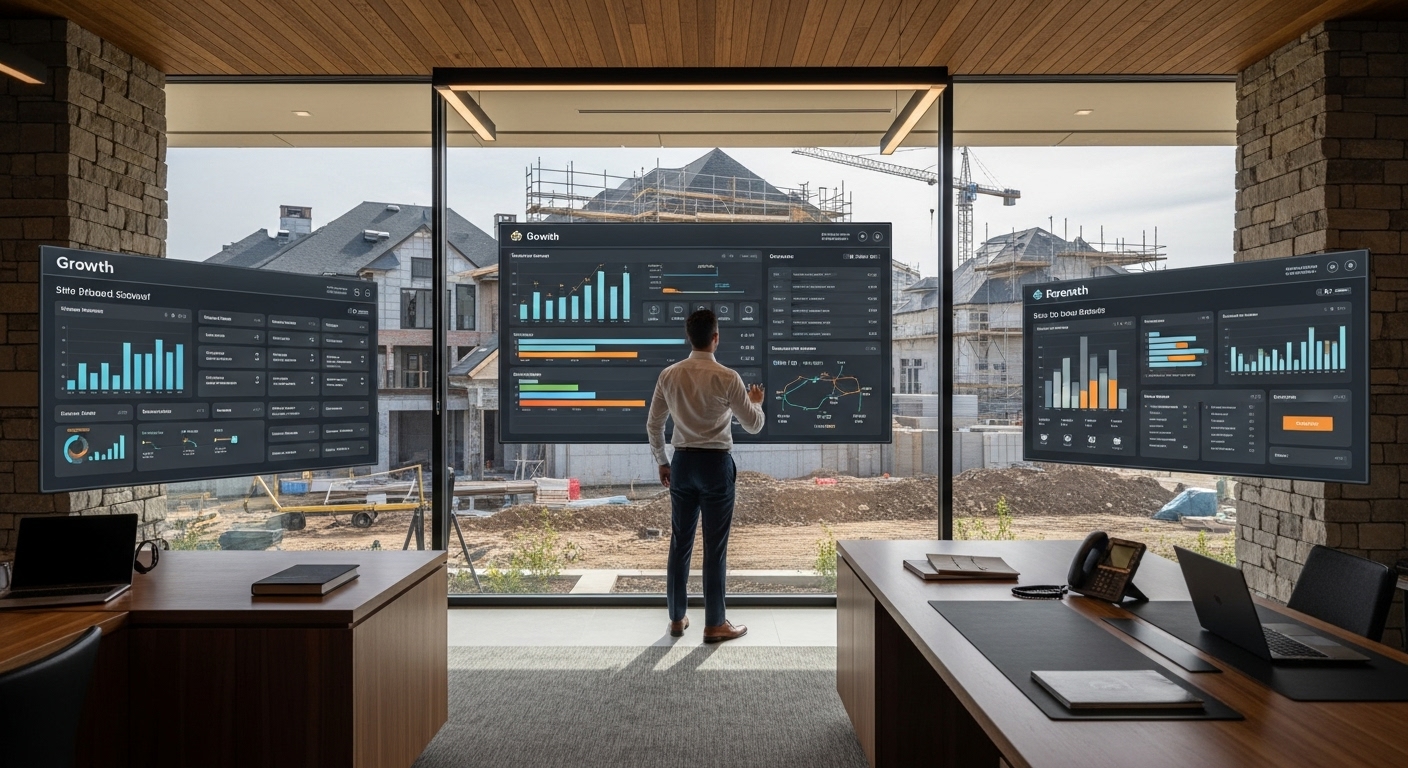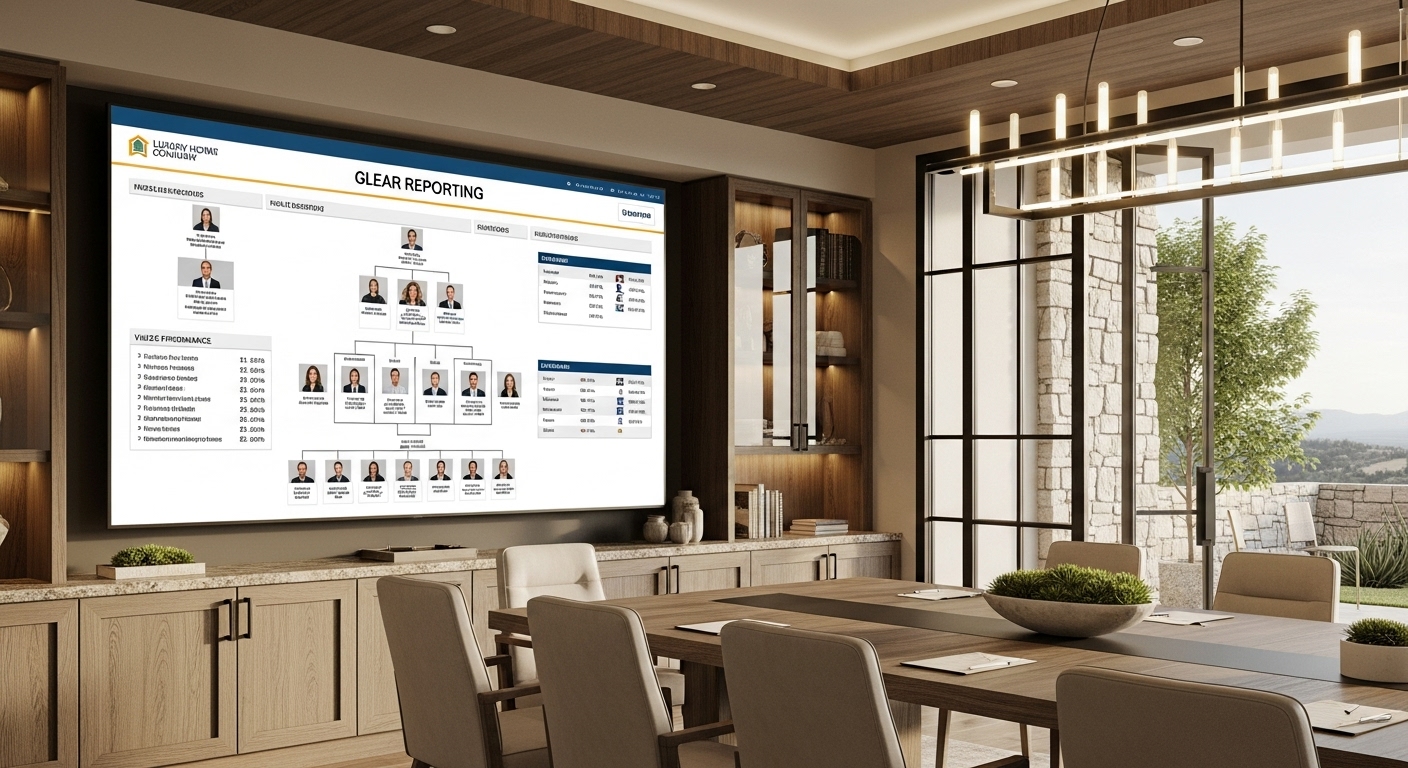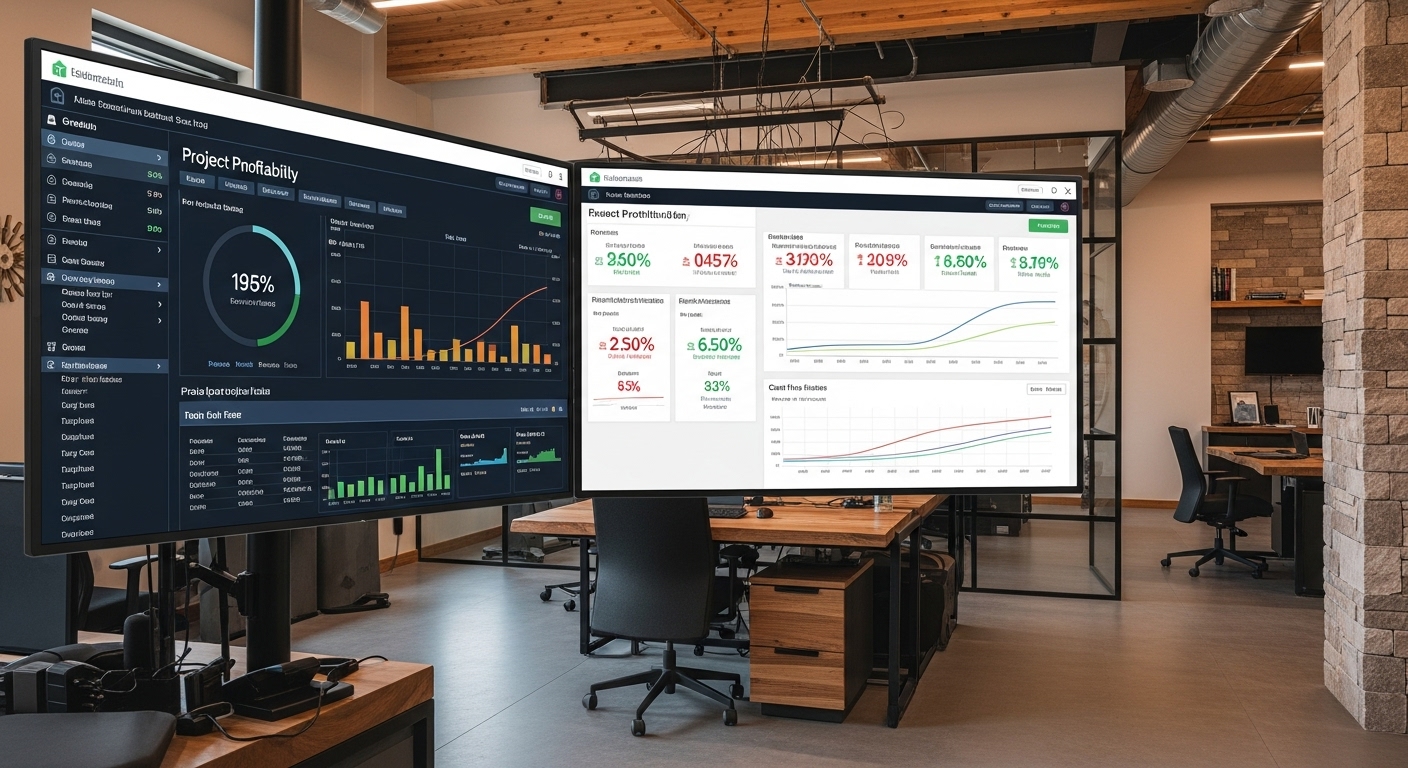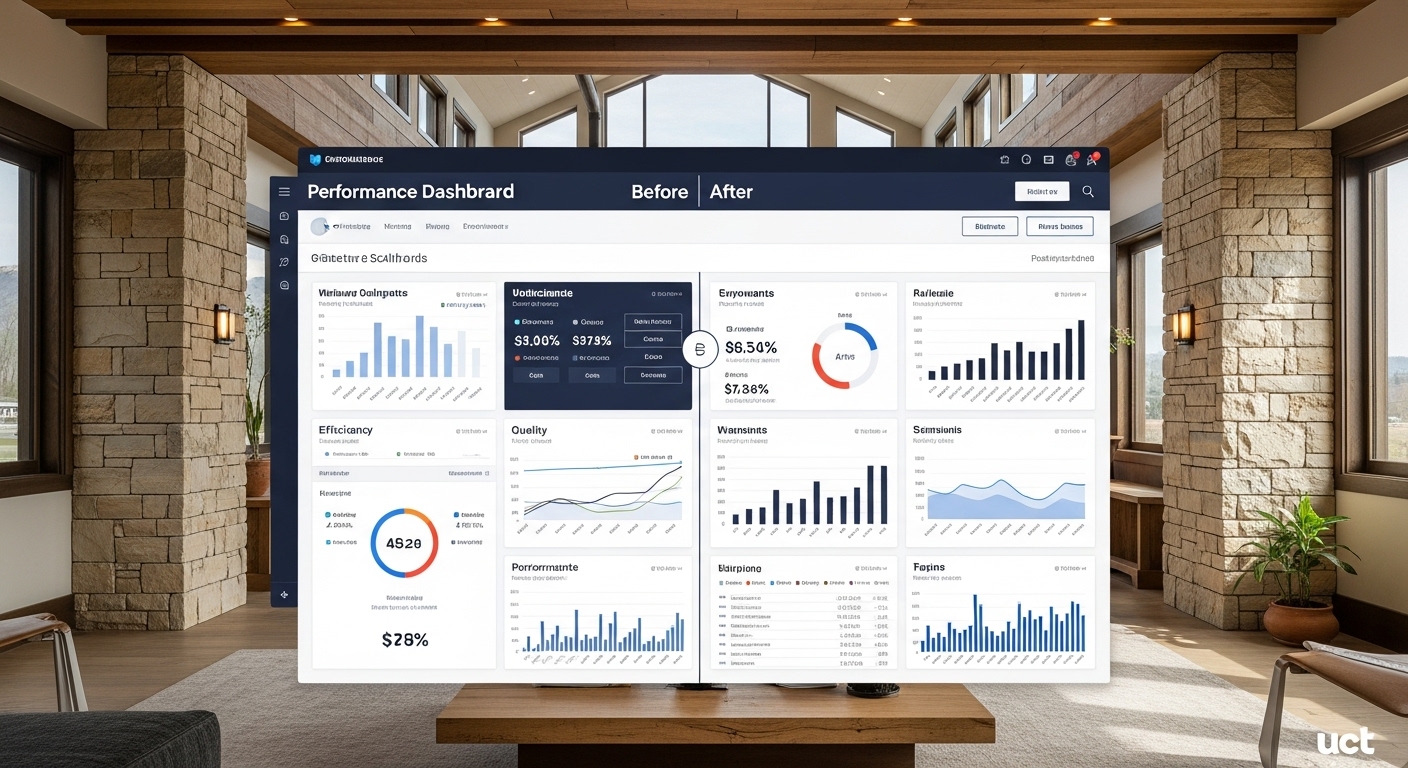August 6, 2025 by 100XBuilds Team
Scaling Operations: 50% Revenue Growth Systems Guide

A $12M luxury builder in Austin implemented our operational scaling framework and achieved 67% revenue growth in 18 months—without adding a single project manager. Their secret? They systematized every critical process before growth hit, creating the infrastructure to handle $20M in annual revenue with their existing team structure.
Most luxury builders approach growth backwards. They chase new projects, hire frantically, and hope their operations can keep pace. The result? Profit margins shrink from 18% to 12%, quality issues multiply, and client satisfaction plummets. Smart builders do the opposite: they build systems first, then scale revenue.
The Hidden Cost of Unscaled Operations
When luxury builders grow without proper operational systems, the numbers tell a brutal story. Our analysis of 200+ custom builders reveals that unscaled operations cost an average of $847,000 annually in:
Direct operational waste: $312,000 in rework, delays, and inefficiencies
Lost opportunity costs: $289,000 in projects declined due to capacity constraints
Quality-related expenses: $156,000 in warranty claims and client remediation
Team turnover costs: $90,000 in recruitment, training, and productivity loss

The builders who scale successfully understand that operational excellence isn't about perfection—it's about predictability. When your operations are systematized, you can forecast capacity, predict bottlenecks, and scale revenue with confidence.
The 5-Pillar Operational Scaling Framework
Pillar 1: Process Standardization and Documentation
The foundation of scalable operations is process standardization. Every successful luxury builder we've worked with has documented their core processes to the point where any team member can execute them consistently.
Critical processes to standardize:
Pre-construction workflow: From initial consultation to contract signing
Project management protocols: Weekly reporting, milestone tracking, change order processing
Quality control checkpoints: Inspection schedules, punch list management, final walkthrough procedures
Client communication standards: Update frequency, preferred channels, escalation protocols
Vendor management systems: Qualification criteria, performance tracking, payment schedules
A $15M builder in Denver documented their pre-construction process and reduced their sales cycle from 127 days to 89 days. The standardization eliminated 23 decision points that previously caused delays and client confusion.

Implementation strategy:
Map your current processes using flowcharts and identify every decision point, handoff, and potential bottleneck. Document not just what happens, but who's responsible, what triggers each step, and what constitutes completion.
Create process templates that include checklists, timelines, and quality standards. These templates become your operational playbook—the foundation for training new team members and maintaining consistency as you scale.
Pillar 2: Technology Integration and Automation
Technology isn't about replacing human expertise—it's about amplifying it. The right tech stack eliminates administrative burden and provides real-time visibility into project performance.
Essential technology components:
Project management platform: Centralized hub for schedules, budgets, and communications
Customer relationship management (CRM): Lead tracking, client history, and sales pipeline management
Financial management system: Real-time cost tracking, budget monitoring, and profitability analysis
Document management solution: Centralized storage with version control and access permissions
Communication tools: Integrated messaging, file sharing, and video conferencing
A $9M builder in Charlotte integrated their project management and financial systems, reducing their monthly reporting time from 16 hours to 3 hours while improving accuracy by 94%.

Automation opportunities:
Automate routine communications like project updates, payment reminders, and milestone notifications. Set up automated reporting that tracks key performance indicators and alerts you to potential issues before they become problems.
Implement workflow automation for approval processes, change orders, and vendor communications. These automations reduce response times and eliminate the bottlenecks that slow project progression.
Pillar 3: Team Structure and Role Definition
Scaling operations requires clarity about who does what, when, and how. Ambiguous roles create overlap, gaps, and inefficiency that compound as you grow.
Key organizational principles:
Clear accountability: Every task and decision has a single point of accountability
Defined escalation paths: Team members know exactly when and how to escalate issues
Cross-training protocols: Multiple team members can handle critical functions
Performance metrics: Objective measures for every role that tie to business outcomes
Growth pathways: Clear advancement opportunities that retain top talent

Scaling-ready structure:
Design your organizational structure for your target size, not your current size. If you're planning to grow from $8M to $15M, structure your teams and reporting relationships for $15M operations.
Create role descriptions that focus on outcomes rather than activities. Instead of "manages subcontractors," write "ensures all trade work meets quality standards and timeline commitments, maintaining 95% on-time completion rate."
Pillar 4: Quality Control and Consistency Systems
Quality control becomes exponentially more challenging as you scale. The systems that work for 12 projects annually won't handle 25 projects without modification.
Scalable quality systems:
Standardized inspection protocols: Detailed checklists for every construction phase
Digital documentation: Photo and video records of all quality checkpoints
Vendor performance tracking: Objective scoring systems for all trade partners
Client feedback integration: Systematic collection and analysis of client satisfaction data
Continuous improvement processes: Regular review and refinement of quality standards
A $11M builder in Phoenix implemented digital quality documentation and reduced their warranty claims by 43% while increasing client satisfaction scores from 8.2 to 9.1 out of 10.

Implementation approach:
Create quality checkpoints that are objective and measurable. Instead of "acceptable finish quality," specify "no visible gaps greater than 1/16 inch, all surfaces smooth to touch, consistent sheen throughout."
Implement real-time quality tracking that identifies trends and patterns. If multiple projects show similar issues, you can address the root cause rather than treating symptoms.
Pillar 5: Financial Controls and Performance Monitoring
Scaling without financial visibility is like driving blindfolded. You need real-time insight into project profitability, cash flow, and resource allocation.
Critical financial systems:
Real-time cost tracking: Daily updates on labor, materials, and overhead allocation
Profitability analysis: Project-level and company-wide margin monitoring
Cash flow forecasting: 90-day rolling projections with scenario planning
Budget variance reporting: Automated alerts when projects exceed predetermined thresholds
Resource allocation tracking: Visibility into team capacity and utilization rates

Key performance indicators for scaling:
Monitor gross margin per project (target: 35-40% for luxury builders), project completion timeline variance (target: within 5% of original schedule), and client acquisition cost relative to project value (target: less than 2% of contract value).
Track leading indicators like proposal-to-contract conversion rate, change order frequency, and vendor performance scores. These metrics predict future performance and allow proactive management.
Implementation Roadmap: 90-Day Scaling Preparation
Days 1-30: Assessment and Foundation
Week 1-2: Conduct comprehensive operational audit
Document current processes, identify bottlenecks, and assess technology gaps. Survey team members about pain points and inefficiencies in their daily workflows.
Week 3-4: Define target operational capacity
Determine your revenue growth goals and calculate the operational requirements to support that growth. Identify the specific systems and processes that need enhancement.

Days 31-60: System Development and Integration
Week 5-6: Implement core technology platforms
Select and deploy your project management, CRM, and financial tracking systems. Ensure all platforms integrate seamlessly to eliminate data silos.
Week 7-8: Standardize and document critical processes
Create detailed process documentation for your top 10 operational workflows. Include checklists, timelines, and quality standards for each process.
Days 61-90: Testing and Optimization
Week 9-10: Pilot new systems with select projects
Test your new operational framework on 2-3 current projects. Gather feedback from team members and clients to identify refinement opportunities.
Week 11-12: Full implementation and team training
Roll out all systems company-wide and provide comprehensive training to all team members. Establish performance monitoring and continuous improvement protocols.
Measuring Scaling Success
Successful operational scaling produces measurable improvements across multiple dimensions:
Efficiency metrics:
Project completion time variance should decrease to within 5% of original schedules. Administrative time per project should reduce by 30-40% through automation and standardization.
Quality indicators:
Client satisfaction scores should increase to 9.0+ out of 10. Warranty claims should decrease by at least 25% within the first year of implementation.
Financial performance:
Gross margins should improve by 2-4 percentage points as operational efficiency increases. Revenue per employee should increase by 15-25% as systems eliminate waste and improve productivity.

Common Scaling Pitfalls and How to Avoid Them
Technology over-investment: Don't buy software solutions for problems you haven't clearly defined. Start with process standardization, then add technology to support those processes.
Insufficient change management: Team resistance can derail even the best operational improvements. Involve team members in system design and provide comprehensive training and support.
Premature complexity: Implement systems that match your current size plus 50%, not your ultimate growth target. Over-engineering creates unnecessary complexity and user resistance.
Inadequate performance monitoring: Systems without measurement become stagnant. Establish clear metrics and regular review cycles to ensure continuous improvement.
The Competitive Advantage of Operational Excellence
Builders with systematized operations don't just grow faster—they grow more profitably and sustainably. They can take on larger, more complex projects because their systems provide confidence in execution capability.
When economic conditions tighten, operationally excellent builders maintain their margins while competitors slash prices. Their efficiency advantages become competitive moats that protect market position and profitability.
Most importantly, systematized operations create predictable client experiences. In the luxury market, consistency and reliability are as valuable as craftsmanship quality. Clients pay premium prices for the confidence that their project will be delivered on time, on budget, and to specification.

The builders who scale successfully understand that operational excellence isn't a destination—it's a competitive advantage that compounds over time. Every process improvement, every system enhancement, and every efficiency gain creates a stronger foundation for future growth.
Your operational systems are the invisible infrastructure that supports visible success. Invest in them before you need them, and your growth will be limited only by market opportunity, not operational capacity.
Ready to build the operational foundation for 50% revenue growth? Our scaling assessment identifies your specific operational gaps and provides a customized implementation roadmap. Contact 100XBuilds today to discover how systematized operations can transform your growth trajectory and competitive position in the luxury building market.
